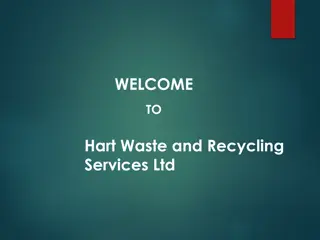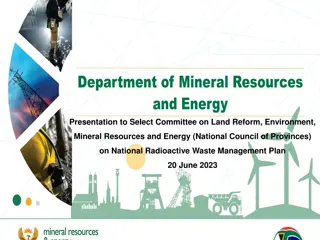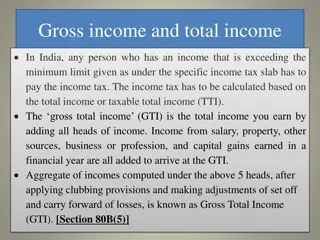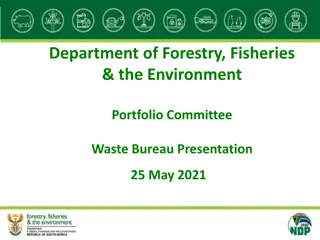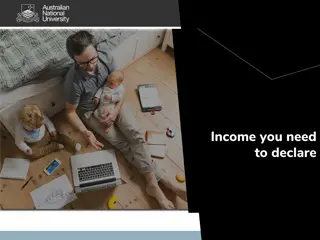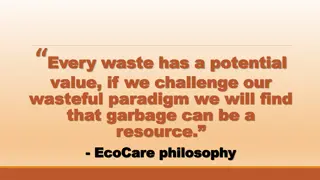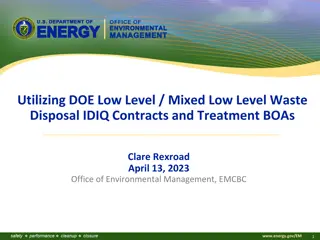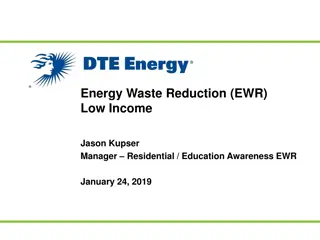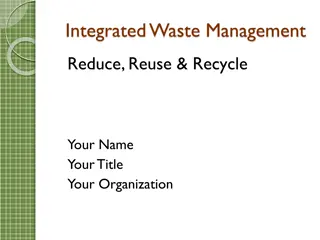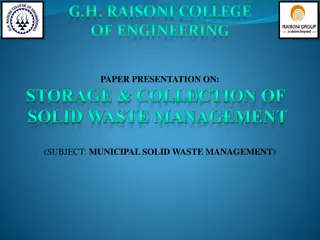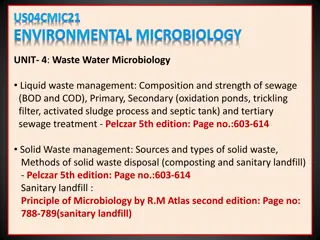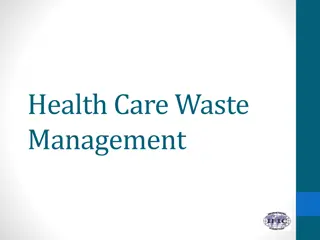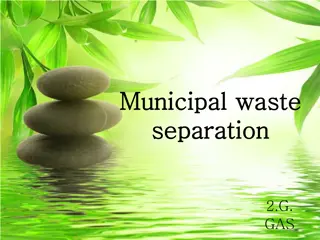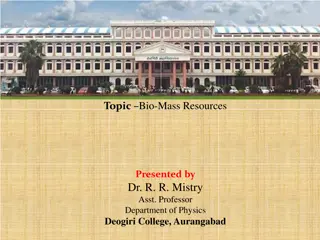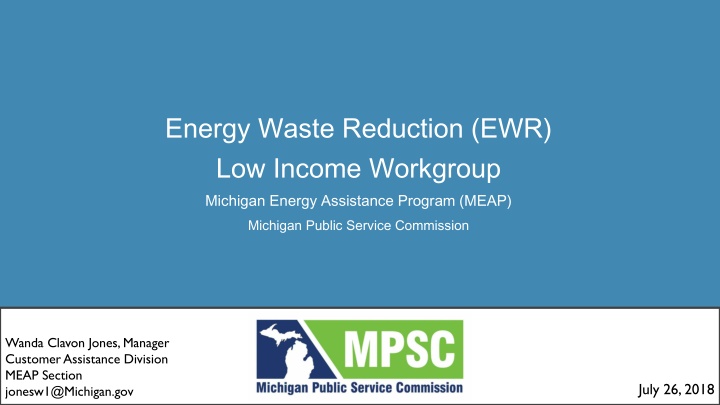
Energy Waste Reduction (EWR) Low Income Workgroup
The Michigan Energy Assistance Program (MEAP) strives to provide energy assistance and self-sufficiency services to eligible low-income households through the Low-Income Energy Assistance Fund. Learn about MEAP's initiatives, grantee awards, and the 2019 Request for Proposals timeline.
Download Presentation

Please find below an Image/Link to download the presentation.
The content on the website is provided AS IS for your information and personal use only. It may not be sold, licensed, or shared on other websites without obtaining consent from the author. If you encounter any issues during the download, it is possible that the publisher has removed the file from their server.
You are allowed to download the files provided on this website for personal or commercial use, subject to the condition that they are used lawfully. All files are the property of their respective owners.
The content on the website is provided AS IS for your information and personal use only. It may not be sold, licensed, or shared on other websites without obtaining consent from the author.
E N D
Presentation Transcript
Energy Waste Reduction (EWR) Low Income Workgroup Michigan Energy Assistance Program (MEAP) Michigan Public Service Commission Wanda Clavon Jones, Manager Customer Assistance Division MEAP Section jonesw1@Michigan.gov July 26, 2018
Michigan Energy Assistance Act Michigan Energy Assistance Act On March 28, 2013 Public Act 615 of the Michigan Public Acts of 2012 was enacted creating the Michigan Energy Assistance Act that requires the Michigan Department of Human Services to establish and administer the Michigan Energy Assistance Program (MEAP). The purpose of the MEAP is to establish and administer programs statewide that provide energy assistance and self-sufficiency services to eligible low- income households. On June 8, 2016, Public Act 147 was signed by Governor Snyder extending the Michigan Energy Assistance Program for three years, until Sept. 30, 2019. This ensures the availability of $50 million in Low- Income Energy Assistance Funds to provide energy assistance to low-income customers. 2
Low Low- -Income Energy Assistance Fund Income Energy Assistance Fund On July 1, 2013 Public Act 95 of the Michigan Public Acts of 2013 was enacted creating the Low-Income Energy Assistance Fund (LIEAF) charging the Michigan Department of Human Services with expending money from the fund as provided by the Michigan Energy Assistance Act. The Act allows the Michigan Public Service Commission (MPSC) to annually approve a low-income energy assistance funding factor, not to exceed $50,000,000, to support the LIEAF. On July 24, 2018, in Case No. U-17377, the MPSC adopted a funding factor of 93 cents per meter per month for all Michigan electric utilities that have opted to participate in the funding of the LIEAF, effective for the September 2018 billing month 3
MEAP Grantee Awards for 2018 MEAP Grantee Awards for 2018 Grant Number Grantee Name Total Award MAE-18-01 Barry County United Way $ 217,480 MAE-18-02 Flat River Outreach Ministries $ 75,265 MAE-18-03 Michigan Community Action $ 11,311,040 MAE-18-04 Society of St. Vincent de Paul $ 6,358,500 MAE-18-05 Superior Watershed $ 3,456,254 MAE-18-06 The Heat and Warmth Fund $ 14,100,270 MAE-18-07 The Salvation Army $ 19,551,715 MAE-18-08 TrueNorth Community Services $ 23,500,000 MAE-18-09 United Way Jackson $ 4,000,000 MAE-18-10 United Way SEM $ 6,750,000 $ 89,320,524 4
2019 MEAP RFP and Timeline 2019 MEAP RFP and Timeline RFP Issued June 29, 2018 Inquiries Due July 11th Pre-Proposal Conference July 18 Proposals Due July 31 Grantees Notified Mid August Program Start Date October 1 5
MEAP Households Assisted MEAP Households Assisted Year MEAP 2015 113,944 2016 105,799 2017 119,964 2018* 64,890 Total 404,597 6 *2018 through July 9, 2018
MEAP Is Assisting Michigans Most Vulnerable Customers MEAP Is Assisting Michigan s Most Vulnerable Customers - - 2016 & 2017 2016 & 2017 * Households may fall into more than one category and not all households fall into one of these. *2018 through July 9,2018 At least one member that is disabled 7
MEAP Is Assisting Michigans Most Vulnerable Customers MEAP Is Assisting Michigan s Most Vulnerable Customers - - 2016 & 2017 2016 & 2017 * *2018 through July 9,2018 8
MEAP Is Assisting Michigans Most Vulnerable Customers MEAP Is Assisting Michigan s Most Vulnerable Customers - - 2016 & 2017 2016 & 2017 Utility Affordable Payment Plans Consumers Energy DTE Energy SEMCO Low-Income Self-Sufficiency Plan (LSP) Monthly Assistance Plan (MAP) Consumers Affordable Resource for Energy Program (CARE) The service disconnection rate for customers on the LSP program has been consistently low. In 2017, DTE reported only 0.37% of enrolled households were shut off. Participation in CARE resulted in an average annual reduction from the previous year in gas usage of 1.34% and electric usage of 8.37%. During the 2017 program year, individuals who participated in the MAP program had an on- time bill payment rate of 84%. 9
MEAP 2019 MEAP 2019 Grantee Role Grantee Role As required by Public Act 615 of 2012: MEAP Grantees will offer services that will enable participants to become or move toward becoming self-sufficient, including: assisting participants in paying their energy bills on time, assisting participants in budgeting for and contributing to their ability to provide for energy expenses, and assisting participants in utilizing energy services to optimize on energy efficiency. 10
MEAP 2019 Michigan Department of Heath and Human Service Role MEAP 2019 Michigan Department of Heath and Human Service Role MDHHS determines eligibility and issues the initial crisis payment using LIHEAP funds Reduces administrative and direct program costs; allows more dollars to be used for direct assistance Provides an opportunity to leverage LIHEAP funds for APP- eligible households and other self-sufficiency measures Eliminates the need for a client to provide information that MDHHS already has access to such as: SSN validation RSDI/SSI income & Medicare expenses Child Support income and expenses Unemployment Compensation Benefits Department issued payments and benefits 11
MEAP 2019 MEAP 2019 Grantee Role Grantee Role No wrong door Seeking a transition that does not disrupt the customer process Navigators and Referral Agencies Enroll customers in APPs LIEAF funds will used for ongoing payments for households enrolled in an APP Provide Self-Sufficiency Programs All participating households must receive services to assist with self-sufficiency 12
Funding for 2019 Grant Year Funding for 2019 Grant Year LIHEAP LIEAF (Federally Funded) (Rate-payer Funded) Assurance 16 Direct Assistance Administration State Emergency Relief (SER) Home Heating Credit (HHC) Self-sufficiency Service & Admin EAP Costs APP Weatherization Other Direct Assistance Programs & Services Energy Payments Energy Payments Programs & Services Energy Payments MEAP Program Initial crisis payment funded through SER 13
MEAP and Energy Waste Reduction MEAP and Energy Waste Reduction MEAP assists in the resolution of energy crisis situations Works with eligible households to develop self-sufficiency plan Plan should help participants to become or move toward becoming self-sufficient Self-sufficiency includes: Paying energy bills on time Budgeting for and contributing to ability to provide for energy expenses-enrollment in utility Affordable Payment Plan Utilizing energy services to optimize on energy efficiency 14
MEAP and Energy Waste Reduction MEAP and Energy Waste Reduction Related to bill payment and energy usage, MEAP strives to: Incorporate customer accountability Provide incentives for positive actions MEAP programs should: Coordinate availability with other program services Other program services that include energy crisis prevention programs, weatherization, and education focused on reducing energy consumption 15

